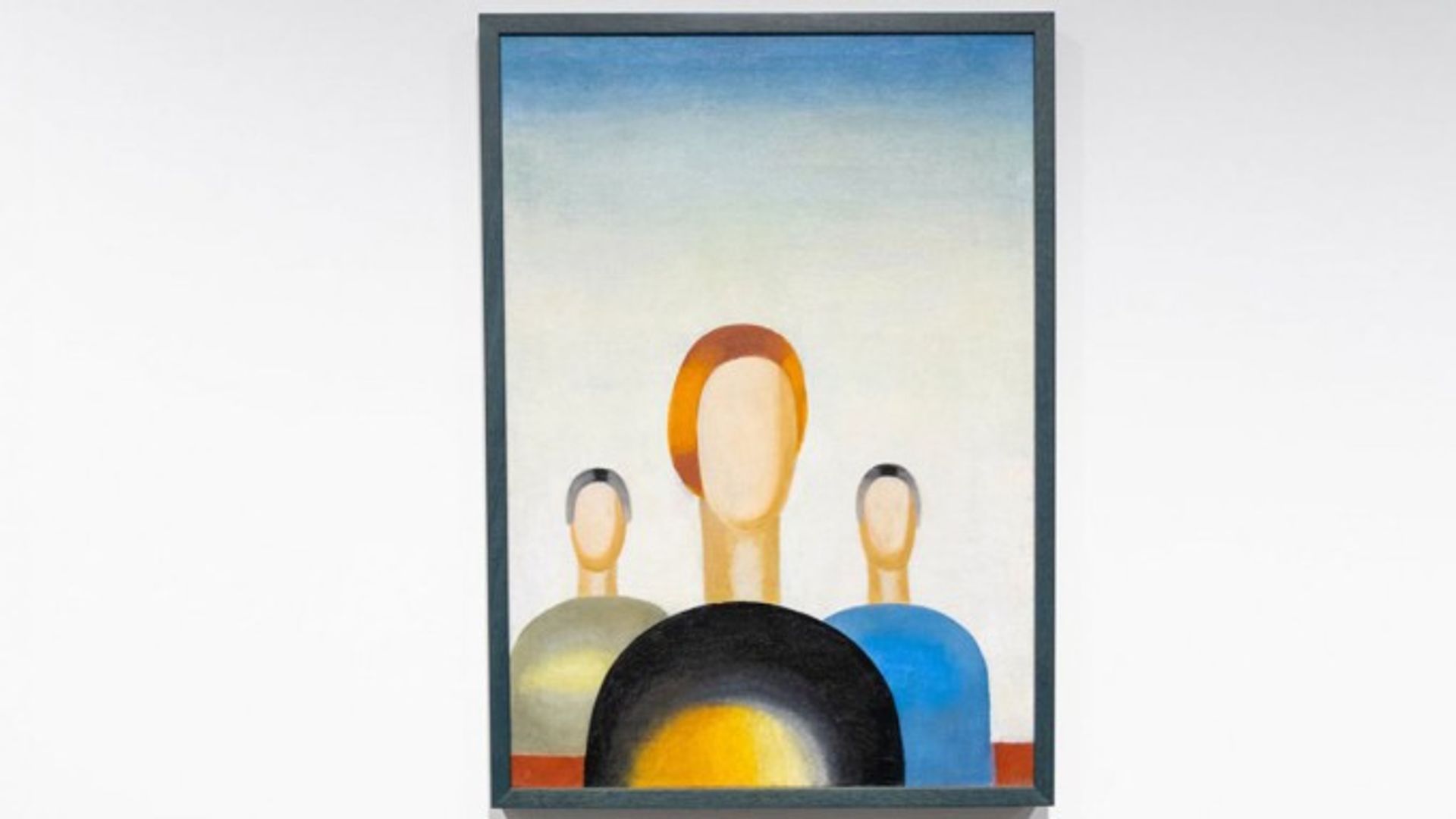Emerging as a worthy contender for most disastrous first day on the job, a Russian security guard at the Yeltsin Centre in Ekaterinburg has been charged with vandalising a 20th-century painting after drawing eyes on its faceless figures, less than 24 hours since starting at the gallery.
Three Figures (1932-34) by the Russian avant-garde artist Anna Leporskaya was at the time on loan from the State Tretyakov Gallery in Moscow for the exhibition The World as Non-Objectivity (until 20 February). Initial news of its defacement was broken last month by our sister paper The Art Newspaper Russia, which reported that visitors had alerted gallery staff on 7 December to small, crudely rendered eyes scribbled on two of the painting's figures in ballpoint pen.

Anna Leporskaya's Three Figures (1932–1934) prior to its defacement. Courtesy of State Tretyakov Gallery
This week, following a police investigation, it has emerged that the vandal was a security guard employed by a private company, the Yeltsin Centre's executive director Alexander Drozdov confirmed in a statement.
The exhibition's curator, Anna Reshetkina, said the painting was damaged by a 60-year-old guard “with a Yeltsin Centre-branded pen” and that he did so on his first day at work. “His motives are still unknown but the administration believes it was some kind of a lapse in sanity,” she said.
The guard has been fired and was last week detained by police on criminal vandalism charges. He faces a fine of up to RUB 74.9m (£738,000)—the amount the painting was insured for—and up to one year of correctional labour or up to three months in prison, according to The Times.
However, damage to the work is easily reversible. "The ink has slightly penetrated into the paint layer, since the titanium white used to paint the faces is not covered with varnish," but the marks were "made lightly", wrote Ivan Petrov in his inital report for TAN Russia.
The Tretyakov estimates restoration costs at RUB 250,000 (£2,500), a fraction of the insurance cost. It will be paid by the private insurers AlfaStrakhovanie, which provided the initial valuation of the work.
The painting has now been returned to the State Tretyakov. Protective screens have since been installed by the centre on all remaining works in the exhibition.
Leporskaya, who died in 1982, was a student of the famous Russian Suprematist Kazimir Malevich. Best known for her work in porcelain, she created alongside other notable avant-garde artists Nikolai Suetin and Lev Yudin. Besides the Tretyakov, her work is held in the Russian Museum of Decorative, Applied, and Folk Arts in Moscow and the State Russian Museum in Saint Petersburg.


